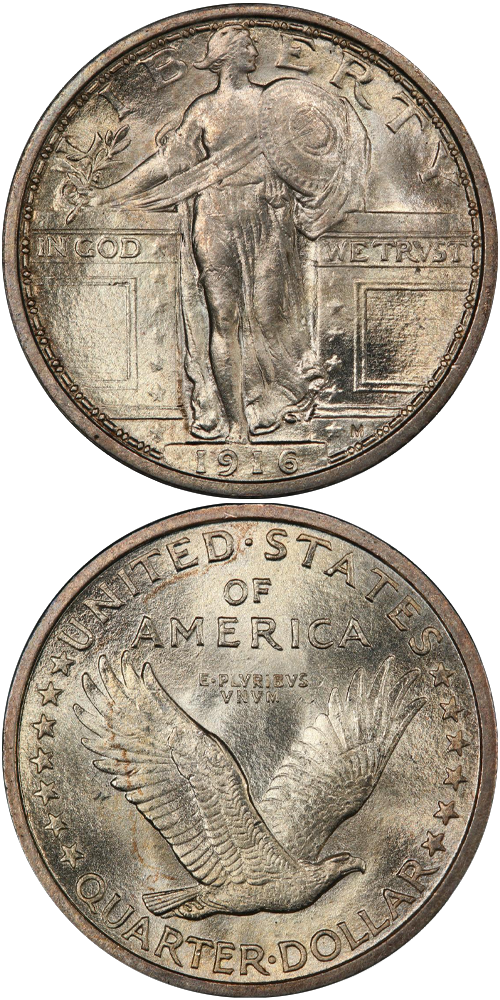1916 Standing Liberty Quarter
This popular and eagerly sought issue hails from an era that numismatic researcher Roger W. Burdette has dubbed the "Renaissance of American Coinage." The year 1916 saw the introduction of three of the designs that collectors generally agree number among the most beautiful ever struck in the United States Mint: Adolph A. Weinman's Mercury dime and Walking Liberty half dollar, and Hermon A. MacNeil's Standing Liberty quarter. The last named was also the last produced, the initial mintage confined to the Philadelphia Mint and amounting to a scant 52,000 pieces. As these first Standing Liberty quarters were struck late in 1916, the coins were released the following year along with the initial batches of 1917 Type I examples. The simultaneous release seems to have resulted in the 1916 slipping past many contemporary Americans, most of whom set aside examples of the far more plentiful 1917 Type I issue as keepsakes of the new design. The result is that, while the high mintage 1917 Type I is one of the most common Standing Liberty quarters in Mint State, the low mintage 1916 is one of the scarcest.
Although it is widely believed that the addition of the chain mail to Liberty was precipitated due to widespread public outcry regarding the exposed breast, there is no evidence that this was the case. The chain mail was actually added to symbolize Liberty's preparedness to defend the nation with the coming of the United States' involvement in World War I.
The example to the left was sold by Stack's Bowers Galleries in the November 2020 Auction, where it realized $45,600.






